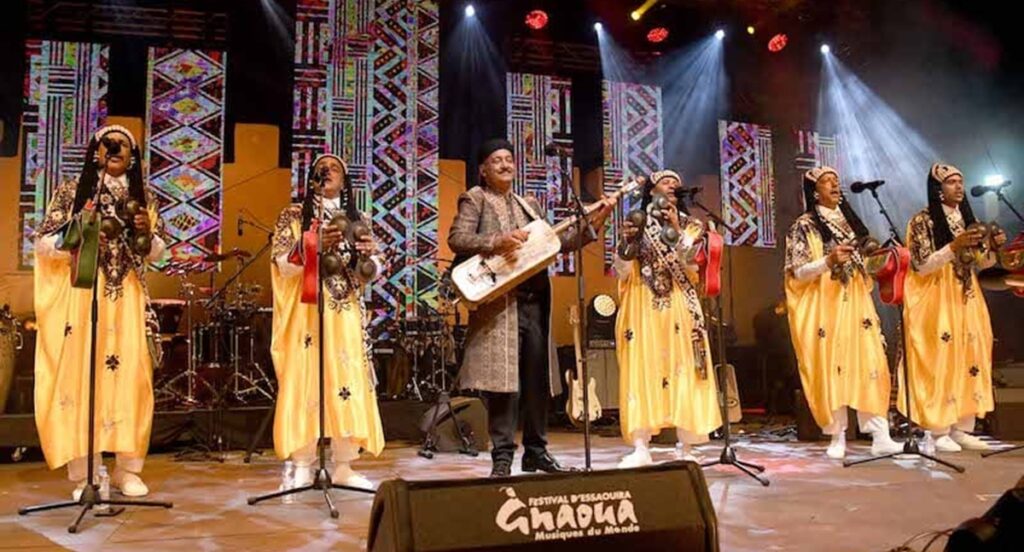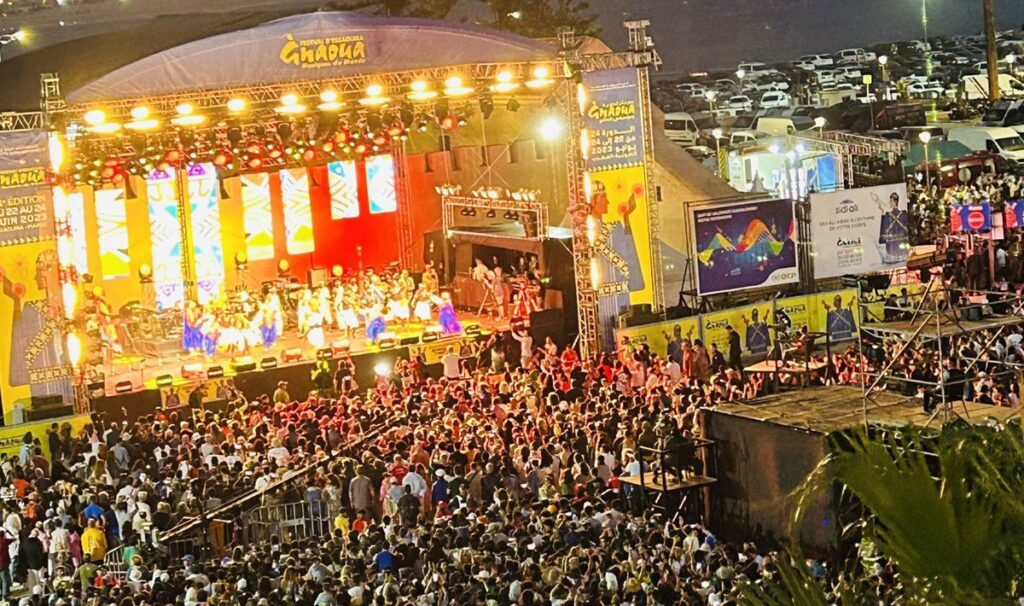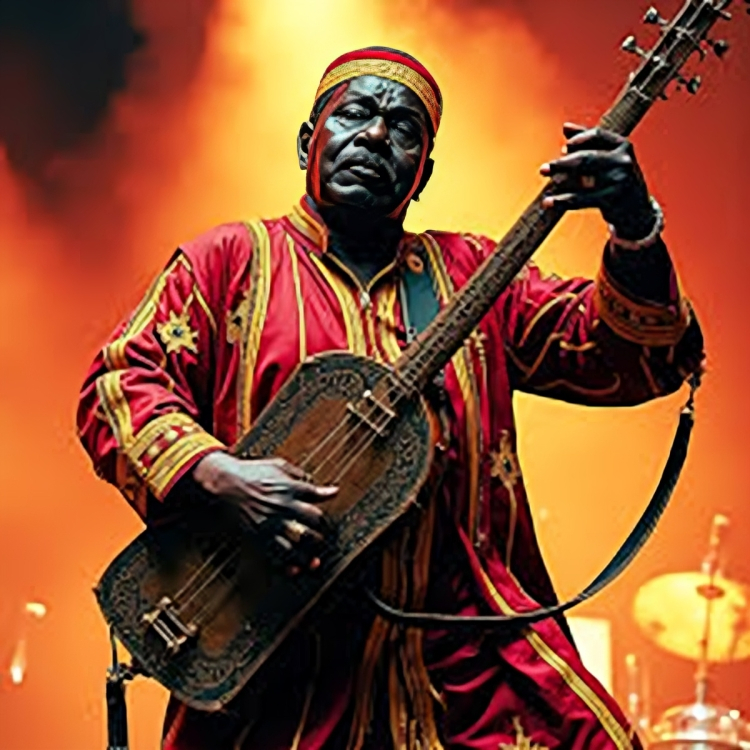Gnawa: The rhythm of the African soul in the heart of Morocco

In the corners of Morocco’s ancient cities, and along its tranquil coasts, a deep rhythm resounds, carrying within it the echo of a long history of suffering and hope. It is the rhythm of...GnawaIt is not just a musical art form, but a spiritual and cultural journey whose roots extend deep into the African continent to blossom in the soil of Morocco, transcending its borders to touch the hearts of millions around the world.
From the jungles of Africa to the plains of Morocco
The origins of the Gnawa are the story of immigrants and enslaved people from sub-Saharan regions, such as Mali, Senegal, Nigeria, and Ghana. Brought to Morocco in past centuries, they brought with them their rich spiritual and cultural heritage, as well as their healing rituals based on rhythm and chanting. In Morocco, these immigrants integrated into society but maintained the privacy of their rituals, which later became known as “Gnawa.” This unique cultural fusion is what gave the Gnawa its distinctive character, blending African Sufi spirituality with Moroccan identity.
Night Rituals and Dardaba: A Journey to the Spirit World
The uniqueness of Gnawa art lies in its rituals, which go beyond mere artistic performance to reach the level of Sufi spirituality. The most prominent of these rituals is the "layla" or "dardba," a celebration that lasts for hours, and sometimes an entire night. The ritual begins with the "kdira" or "ada," a gentle rhythm that sets the stage for the spiritual atmosphere. Then, the rhythms and chanting escalate, and the colors and costumes change (each color symbolizes a specific spirit or "king of the jinn"), culminating in what is known as the "farja" or "hadra." At this stage, some of those present enter a state of spiritual attraction (jadhba) to the tunes of the music.
The purpose of these rituals is to achieve spiritual and psychological healing, and to rid individuals of illnesses and pains believed to be caused by spirit possession. “The teacher“ The Sheikh of the Community is the spiritual and artistic leader of the night, guiding the band and attendees on this profound spiritual journey.

Essaouira: The Gnaoua Capital of the World
It is impossible to talk about Gnawa without mentioning the city of EssaouiraThis quiet coastal city was not only an incubator for this art form, but also the source of its global fame. Thanks to its position as a commercial center and a crossroads of civilizations, Essaouira became a fertile ground for the spread and development of Gnaoua. The "Gnaoua and World Music Festival," which Essaouira has hosted annually since 1998, was a turning point in the history of this art form. The festival has succeeded in attracting international artists from various musical genres, allowing Gnaoua to fuse with jazz, blues, rock, and reggae, gaining a wider audience and global acclaim.
Three pillars that are not mentioned without Gnawa
When we talk about Gnawa innovators, the names that stand out are those who not only preserve the heritage, but also work to renew it and bring it to new horizons.

- Teacher Mahmoud Guinea: An undisputed Gnawa icon. His deep voice and powerful performance on the hajjouj instrument made him a symbol of this art form. He collaborated with international artists such as Bill Laswell andPhil FlannarHe participated in many international festivals, which contributed to introducing the world to authentic Gnawa music.
- Teacher Hamida BoussoA unique and charismatic artistic figure, he was known as a mentor to new generations of Gnawa musicians. His energetic performances and passion for music made him a key reference in this art form.
- Teacher Hassan Hakour (Hassan Belmanjar)One of the most prominent teachers who, with his unique style, was able to combine authenticity and innovation, and he contributed to bringing this art to the international level through numerous artistic tours.
The secret of globalism: the chatter, the singing, and the rhythm
What makes Gnawa such a unique art form that it has transcended the boundaries of Moroccan culture and reached the world?
The secret lies in Gnawa music, which is uniquely distinctive. It is a music based primarily on rhythm and consists of three main instruments:
- Al-Hajajouj (the center)A three-stringed stringed instrument, sometimes called the kantra, is the soul of Gnawa music. The maâlem plays it and directs the rhythm. Its deep sound reflects the “beating heart” of Africa.
- Qaraqish (squash)Two iron instruments similar to cymbals, which the player strikes against each other to produce a continuous and powerful rhythm, representing the “heartbeats” that move the soul and body.
- drums: It is used to add more depth to the rhythm, and is considered essential in some rituals.
The repetitive and extended rhythms of Gnawa music create a state of hypnosis and spiritual seduction, causing the listener to lose track of time. This has attracted musicians from various artistic backgrounds, who have found in these rhythms a rich source of raw material for experimentation and fusion. Furthermore, the themes addressed in Gnawa chanting, from stories of slaves and their suffering to praise of the righteous and requests for healing, carry profound human messages that transcend language and cultural barriers.
In conclusion, Gnawa art is not just a Moroccan heritage, but a living testament to the intercultural exchange and the ability of art to serve as a bridge between cultures and a mirror that reflects the eternal human spirit.





